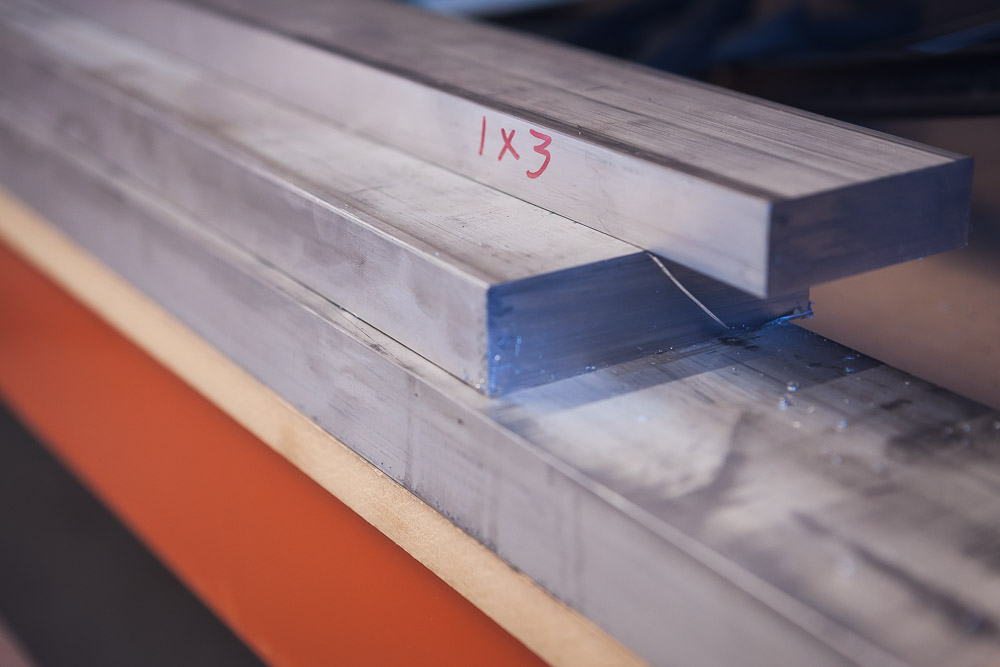Creating a design in a computer, whether it be a bicycle or piece of furniture, is like designing a puzzle. Whoever’s job it is to turn that design into a physical thing has to solve that puzzle. The better that person is at solving puzzles the faster they’re able to make the physical thing with fewer tools and better use of material. This is effectively the relationship of the machinist to the designer. The designer makes the puzzle, and the machinist solves it.
We’ve got a big CNC machine, or computer numerical control, to help execute the solution quickly and reliably, but Mike, our machinist, still has to tell the CNC the most efficient way to turn design into reality. First, Mike has to figure out how to hold the part he’s going to machine, which is otherwise known as work holding. Often times he has to machine a completely new part, or fixture, just to hold the part he is trying to make in the desired position.

Raw Material.

CAD Model with the Designer.
Our CNC machine works on 3 different axis: X, Y, and Z. The table moves on the X and Z axis, and the cutter moves on the Y axis. To maximize the efficiency of the machine Mike wants to physically touch the part as few times as possible because every time he has to touch the part, he has to stop a program, remove and re-fixture the part, then start another program.

Tooling paths in software.
At a very high level, Mike goes through three primary steps in machining a part. First is the work holding, which can involve CNC operations as well. Next he creates the tooling paths, which is to determine the sequence of cuts and the cutting tools to perform the operations. These operations range from taking out large chunks of material to tiny, fractional amounts of material that create a finished surface. Mike will often run through a program virtually in the computer to make sure there aren’t any errors or mistakes before running the program. The one thing a machinist wants to avoid is called crashing the machine. To crash the machine is to run the tool or the tool holder into either a fixture or the part being made, usually with tons of force. It sounds like a car accident. There are very few safeguards on a CNC machine. If you tell it to slam the cutter into your vice, it will gladly do so potentially destroying whatever tool it is holding or the spindle itself. After making sure all the tooling paths are safe and clear, he’ll go ahead and run the program keeping an eye on the operations to make sure everything is going as planned.
Having a quality, reliable CNC machine and a good machinist is absolutely paramount to Argonaut operations and critical to making new frame parts in a short amount of time. The time it takes to make an individual part is fairly similar between good machine shops. The big difference is the time to create a part, make necessary revisions, and so on. It is the ability to make multiple revisions with very little lag time that makes having a CNC machine and operator in house so beneficial.
Being able to machine our own molds sets us apart in the bicycle industry and puts us among only a few bicycle companies with this capability.
Thanks for reading.




